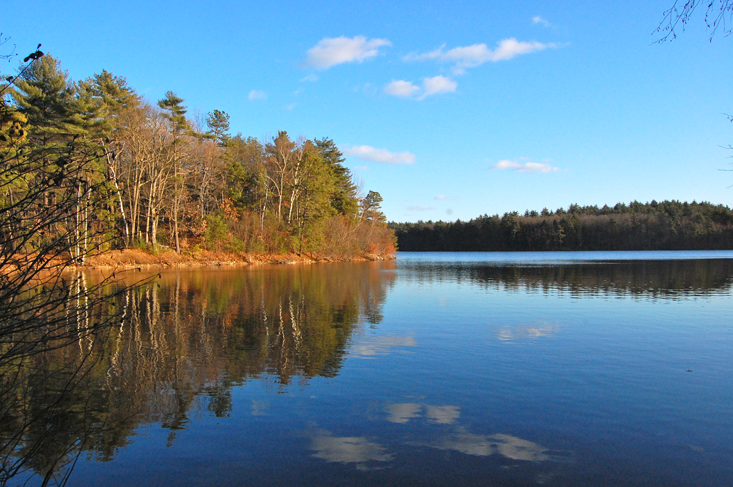Nautius:
two
“I see no whirligigs here this early in the year, but they are easy to spot on a lake such as Walden when the water is still and they can gather in close, swirling clusters. They overwinter on the bottom and emerge in spring to breed, producing new generations that grow to fingernail length within a few weeks. Each beetle uses flattened legs to paddle quickly through the thin surface film, guided by compound eyes that are each divided, with one-half aimed above the water line and one-half below. Most fish leave whirligigs alone because they leak bitter chemicals when handled, and I have seen newly stocked brook trout, brazen and ignorant from life in the hatchery, snatch whirligigs from below and then spit them back out again like slippery watermelon seeds. Whirligigs often gather in groups that help to discourage predators by pooling more watchful eyes in one place, and the whirling dances within the clusters are not as random as they seem. The individuals on the perimeter are generally searching for fallen gnats, emerging midges, or anything else edible, and they emit ripples like radar to home in on struggling prey. In adult swarms, those closer to the center are more likely to be cruising for mates, using their ripples to communicate with one another and avoid collisions.
Much more has been said and written about Thoreau’s philosopher-poet side than his naturalist side, but as a scientist I am more interested in the latter. The journals that he kept from 1837 to 1861 were so full of natural history observations that they might have become a major scientific work if he had not died of a lung ailment at age 44. He probably thought so, too. Two months before his death in 1862 he wrote a letter to a friend, saying, “if I were to live, I should have much to report on Natural History generally.”
During the winter of 1846, Thoreau drilled more than a hundred holes through the ice of Walden Pond and lowered a weighted line to produce what may be the first map of the floor of an American lake, thereby identifying Walden’s deepest point in the western basin near his cove. In August 1860, he also sent a thermometer down in a stoppered bottle to measure the layered structure of the water column, a first formal analysis of the thermal stratification of the lake. He was amazed at the temperature difference between the upper and lower layers, and he speculated on what it might mean for the resident fish. “What various temperatures, then, the fishes of this pond can enjoy,” he wrote. “They can in a few minutes sink to winter or rise to summer. How much this varied temperature must have to do with the distribution of the fishes in it.””
A great article about the stories that the mud of a lake tells a scientist.


